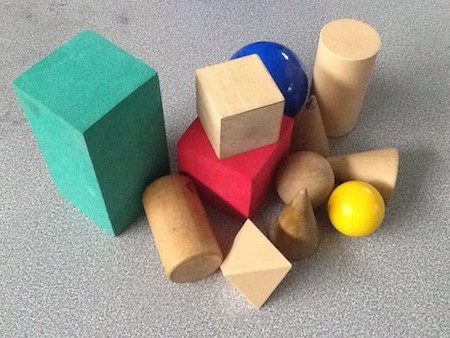Learning Intention: Students will investigate Euler’s rule that describes the relationship between the number of faces, the number of edges and the number of vertices of 3D objects.
Success Criteria: Students will create 3D shapes using toothpicks and jelly-lollies to represent edges and vertices. They will then count and record in a table the faces, edges and vertices of the shapes and investigate Euler’s Rule.
Today we are going to learn more about 3D shapes and investigate a special relationship between the number of vertices, edges and faces of such shapes. Create the following shapes using toothpicks and jubes:
- tetrahedron
- triangular prism
- square base pyramid
- cube
- pentagonal pyramid
- pentagonal prism
- hexagonal pyramid
- hexagonal prism
Now draw a table with six columns that records the name of the polyhedron, the name of the base shape, the number of sides on the base shape, the number of faces, number of vertices and number of edges. Complete the table for each of the 8 shapes listed above. Now see if you can work out any relationship between the values in your table.
- Euler’s Rule from Maths is Fun!
- Euler’s Rule online shapes and fill in the edges, faces and vertices.
- Euler’s Rule worksheet to print
- Exploring Geometric solids worksheet to print


